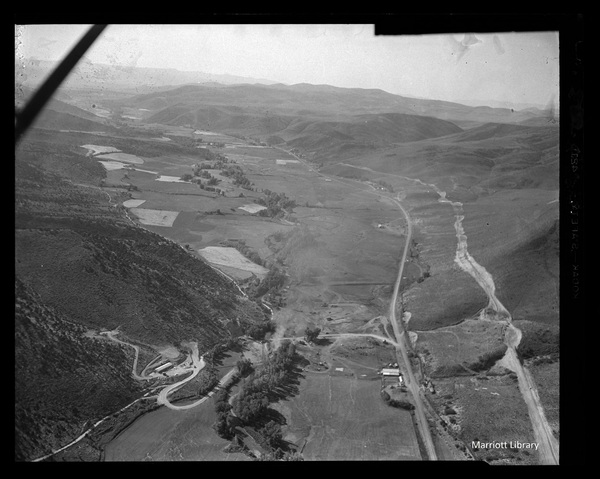Dublin Core
Title
Description
How would you weigh the cost of progress? As Utah’s population grew in the mid-twentieth century, state officials were concerned about being able to meet community water needs. In order to plan for the future, Utah leaders worked with the federal Bureau of Reclamation to design the Weber Basin Project. For the small Summit County town of Rockport, this would require its twenty-seven farming families to be uprooted from their homes.
Like other farming communities along the Wasatch Back, the town of Rockport had depended -- since its founding in the 1800s -- on the Weber River as a vital source of irrigation. When Utah experienced a devastating drought in the 1930s, rural areas like Rockport were hit the hardest. Unable to sustain their farms, many Rockport residents moved away, leaving just twenty-seven families behind.
The Weber Basin Project of the 1950s promised to expand the water supply for growing cities along the Wasatch Front. It would also provide additional irrigation water for farmers by creating a series of dams and reservoirs on the Weber River. Two of those dams would even generate hydroelectricity. As they considered the future of the state, Utah leaders felt that these sorts of projects were necessary to maximize the state’s water resources and protect against extended periods of drought. But building Wanship Dam as part of the Weber Basin Project would replace the town of Rockport with the Rockport Reservoir, and require residents to relocate within three years.
Such a difficult trade-off required a vote. Those within the broader water conservancy district responded overwhelmingly in favor, with eighty percent saying yes to the project. Not surprisingly, most in Summit County voted against the dam, with 357 votes opposed and only 47 in favor. One local resident observed that, “there appears to be no direct benefit for Summit County.”
Today, Rockport is something of a watery ghost town. The Weber Basin Project now provides irrigation water to over 90,000 acres and drinking water for half a million people. The story of Rockport Reservoir demonstrates that living in a place with scarce water sometimes requires evaluating the needs of the many against the livelihoods of the few.
Creator
Source
_______________
See Summit County Historical Museum, exhibition file for Rockport: Weighing the Cost of Progress, curated by Joe Frazier, 2024; David Hampshire, Martha Sonntag Bradley, and Allen Roberts, A History of Summit County (Salt Lake City: Utah Historical Society, 1998); Christopher J. McCune, Weber Basin Project (Washington DC: Bureau of Reclamation, 2001); “Summit Group Opposes Basin Dam Location,” Ogden Standard Examiner, December 4, 1952; “Early Start Assured on Weber Basin Work,” Deseret News, December 8, 1952.

